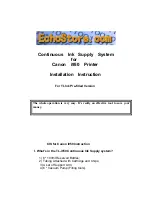
17
3.4 Connect Cables
3.4.1
Cabling Guidelines
Follow all specifications provided by manufacturers of non-Baicells products used. Below are
guidelines for cable layout and installation.
General guidelines:
•
RF antenna feeder cable bending radius: 7/8” > 250 mm, 4/5” > 380 mm or as specified
by the manufacturer
•
Jumper cable bending radius: ¼” > 35 mm, ½” (super soft) > 50 mm, ½” (normal) > 127
mm or as specified by the manufacturer
•
Power cable and grounding cable bending radius: > triple the diameter of the cable or
as specified by the manufacturer
•
Optical fiber bending radius: 20 times the diameter of the optical fiber or as specified
by the manufacturer
•
Recommend not binding together the cables
•
Attach a label to identify each cable
Optical fiber cable layout guidelines:
•
Do not coil or twist the cable
•
Do not bind on the turn in the cable
•
Do not pull or weigh down the optical fiber
Grounding layout guidelines:
•
The grounding cable must connect to the grounding point
•
The grounding cable must be kept separate from the signal cables, with enough
distance to avoid interference with communications signals
3.4.2
Connect RF Antenna Cables
You will need to prepare the RF cables that run between the eNB and the RF antenna specific
to the cell site location. Follow the steps below to connect the RF antenna cables to the eNB.
1.
Connect an RF antenna cable to ANT0 interface on the eNB (Figure 3-9).
2.
Connect an RF antenna cable to ANT1 interface on the eNB.
3.
After
testing eNB operation later in the installation process, waterproof the antenna
connectors using waterproof daub and waterproof tape.
















































